
Introduction: The following is an extract from the opening chapter of my upcoming book Cor Jesu Sacratissimum. (This is the bigger of two books I have coming from Angelico Press. The first small one is called The Gentle Traditionalist and there is a post about both books here.)
We include this extract here as a key to many of the themes of this website dedicated, as it is, to the Sacred Heart as well Catholic tradition.
It might also be said that I am writing as traditional Catholic who was once deeply committed to the New Age movement. Hence, both this piece and this website very much reflect my concern for the dangers of the New Age movement.
Note that reference is made to an earlier prologue in my (big) book, which will appear in the print version. The same prologue has appeared in my weblog here. It is not necessary to refer to that prologue first, though slightly fuller comprehension of this extract might be gained if one did.
Finally, what follows has been re-paragraphed for easier reading from a monitor. The print version will differ in other small ways as well. And now the extract itself …

Dear Lector – such is the way I would like to address any one of you who renders me the gift of careful, sympathetic attention. I greet you warmly in this long book, written in four different European countries over six years from 2008- 2015.
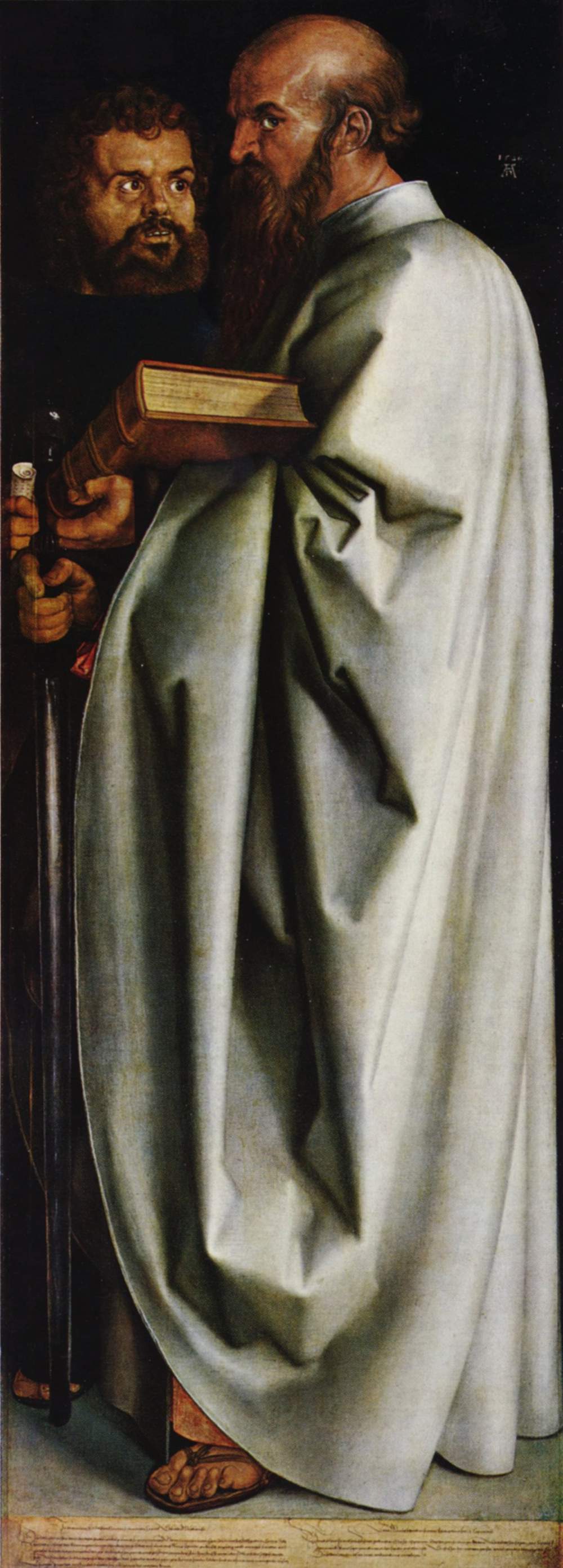
In this chapter, originally drafted in eastern France, I talk a little of this one of us who is Roger Buck. This book is not autobiography per se. Nonetheless, elements of my life story appear throughout.
These fragments from memory are not offered from a hunger to share my tale with you, Lector. Rather, they have another end.
For each life-story renders different perspectives or vantage points – different windows onto the world. What I would extend to you is a chance to gaze at the world, through windows different from your own.
St. Paul said we see through a glass darkly, and, of course, the glass in these windows is clouded. I want to have no pretensions to certainty and comprehension I do not possess. I simply offer you these vantage points, inadequate as they are, in case you find them useful to grapple with the world.
By the world, I principally have in mind the life of humanity at this dawning of the Third Millennium. This world is clearly possessed of unimaginable diversity. Yet, however, inconceivable this diversity is, we urgently need to try to imagine it.
With this aspiration, I wrote my prologue imagining all the different ‘ones of us’ our world contains. Plainly, it is a world of real tragedy and real love.
Yet in addition to the good and evil, which have ever marked our fallen state, it is also a world, which appears set for centuries on a course of continuously deepening materialism.
Regarding Materialism
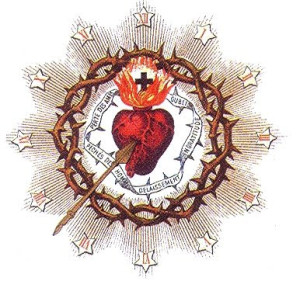
Materialism: it is a word many associate solely with the commercial ethos, which saturates our modern existence.
Here are thoughts initially drafted from ‘the Christmas season’ in a large French city. And I imagine, dear Lector, you will feel the heartbreak of such materialism, as I do.
Christmas is the time to celebrate the moment His Sacred Heart began beating in this world. This Heart came to liberate us from the purely materialistic.
Yet this Christmas in France, the very opposite surrounds me: the endless incitation to buy, buy, buy, the shopfronts, which entice desire of material luxury, technological gratification and more.
There are many forms of such materialism. For on the way to the Holy Mass today, I passed a sex shop, where the human body is marketed as object. And there are graphic images outside, which would have been unthinkable two or three generations ago …
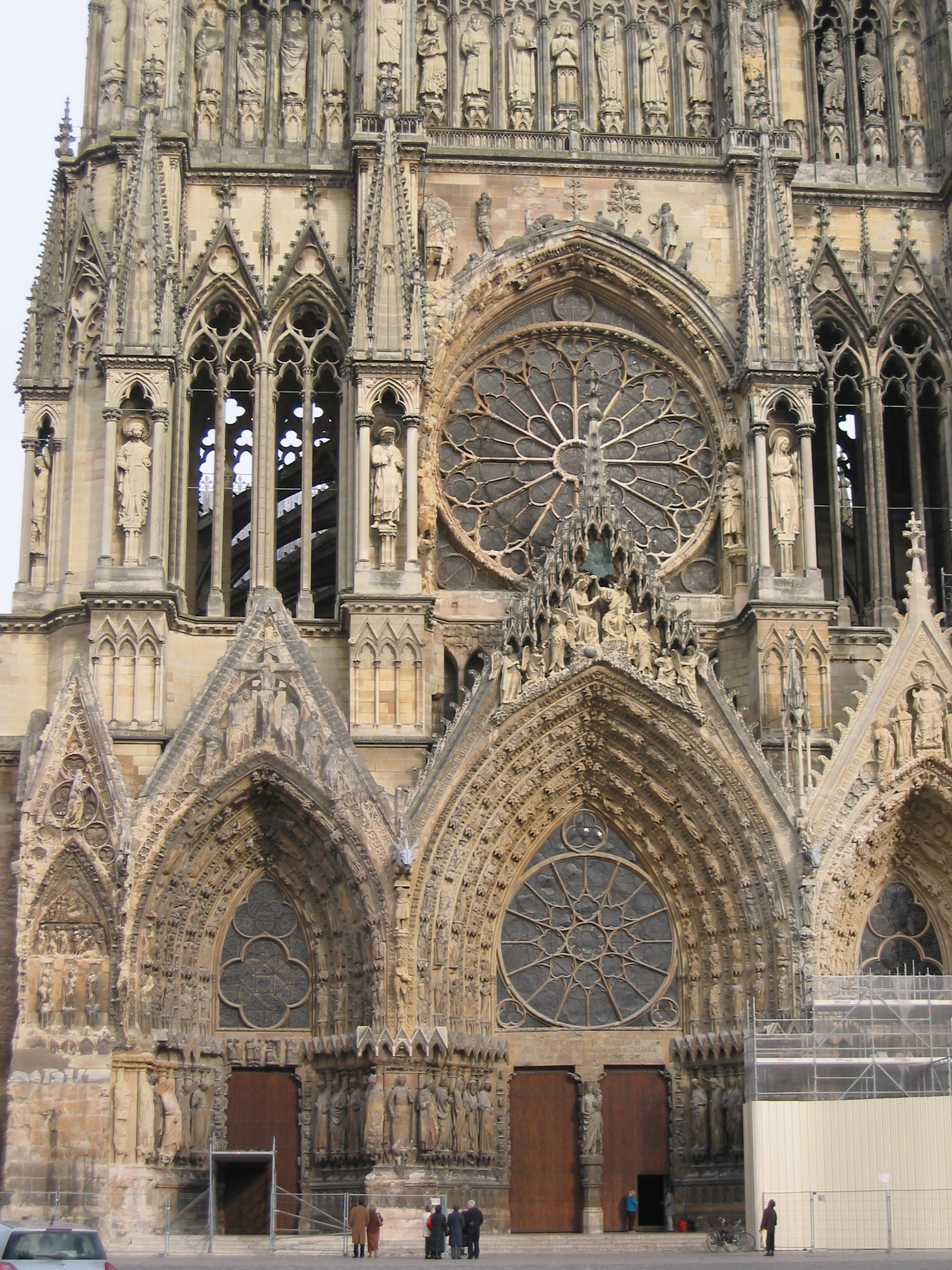
Now, in speaking of materialism, I have the tragedy of such commerce in mind – but I mean other things by that word as well. I mean not simply consumerism, but a centuries-long process of scientific or philosophical materialism, where thinkers considered the world in increasingly material terms, gradually eliminating everything else.
The men and women of the Middle Ages never questioned a spiritual reality. Not only did they not question the reality of God, they also did not query the presence of Angels and demons or even ghosts. They did not doubt in the Communion of Saints, who interceded in this vale of tears.
And they did not doubt the Real Presence of Jesus Christ in the Holy Eucharist. The greatest minds of the Middle Ages took all this as granted and would certainly see our modern doubt as an extraordinary and pathological condition.
Doubt … this single word expresses so much of what was set in motion by the modern age, as philosophers – Descartes, Hume, Kant and all the rest – called everything of Faith into question. And Science? Science, from Copernicus to Darwin and beyond has frequently fostered the same agenda.
The result? This book will be a meditation on the results, which many of us see. Suffice it to say, a trajectory, which began as doubt, has culminated in denial.
For today, it is not just ‘one of us’, but many souls, who seek ‘to eliminate all God talk and metaphysical nonsense.’
Yes, increasing numbers now seek to reduce the universe to matter alone. And they believe humanity will benefit from their reductionistic projects! Such souls often include the most intelligent, able and influential minds of our age.

They create highly effective forms of education, media and propaganda, telling us that all that matters – is matter. They seek sincerely to liberate us from what they confidently declare to be illusion!
Clearly, this philosophical and scientific materialism is not unrelated to commercial materialism: the pursuit of happiness in things – without regard to God, His Blessed Mother or the Holy Church. And neither can these varied forms of materialism be disentangled from the secular, liberal and capitalist ambitions of modern times.
Secular, liberal, capitalist: These words describe intertwined historical processes in recent centuries, which have nurtured ever more worldly values. And so in this book, dear Lector, you will often find the terms conjoined. For example, I frequently speak of Secular Materialism to describe the ideology that dominates the West today.
In many ways, this Secular Materialism first emerged in the Protestant cultures of recent centuries. For in these cultures, many elements of the Mystery that Catholics had guarded for over a millennium, were thrown to the wind.
Foreword for Monarchy by Roger Buck
A Vast, Multifaceted Mystery
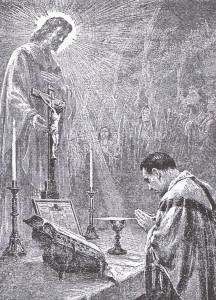
We speak – falteringly – of a vast, multifaceted Mystery entailing the Holy Sacraments, Mary, Mother of God and Queen of Heaven, the Holy See, an Ordained Hierarchy and the Revelation of the Sacred Heart of Jesus.
I am writing as a Catholic of Faith. Here is a term I use to distinguish from lapsed or nominal Catholics – as well as many still-practicing liberal Catholics, who have lamentably set aside many, if not all, aspects of the traditional Faith.
Writing as a Catholic of Faith means I do not believe the Catholic Mystery is there for nothing! Thus, I do not believe that rejecting the Mystery – as happened in the Reformation – can be without grave consequence for humanity.
Here I have no wish to offend Protestant Christians, who so often valiantly uphold faith in Jesus Christ in our troubled times. Nonetheless, as this book unfolds, it should become evident to you, Lector, why I think Luther and Calvin’s Reformation, which stripped Catholicism from much of the West, has contributed significantly to global materialism.
For I hope it will be apparent why I believe the repression, often brutal, of the Catholic Mystery has fostered a materialistic mindset – one which is all the more cold and individualistic for being denied the warming Sacraments of the Church.
I will also elaborate what would seem obvious indeed: that commercial materialism and economic liberalism are ruining life on earth. Not only environmental degradation sets in, leading to slow catastrophe, as ice begins to melt and a planet starts to burn, but the human soul becomes fettered, stunted and mechanical.

On New Age Dogma and The Catholic Mystery
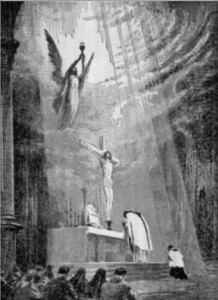
Here are grim things I see through my windows onto this world. Yet I also wish to offer windows onto worlds of hope – worlds which can remedy the crisis of materialism. These worlds are nonmaterial; they are worlds of spirituality and mystery, for lack of better terms …
But which spirituality and which mystery? For long years, I was committed to the New Age movement. That movement stands (and falls!) on the thesis that every religion simply expresses but a single, timeless universal spirituality.
This universal spirituality, it is said, transcends ‘limited’ religions like Christianity. Likewise, it is said to be cloaked by divisive forms of language – only a veritable Babel of different tongues creates the illusion that genuine religious differences exist. Beneath the surface, there is really only oneness (an important word, as we shall see, for New Agers).
Here is a New Age dogma – in a movement claiming to be free from dogmas. But is the dogma really true? Or could it be that a Christian Mystery exists, which actually differs from New Age spirituality? Could it be a false dogma that every spiritual approach essentially amounts to the same thing?
If so, could this dogma render New Agers blind to the Church – because they are all-too-self-assured that whatever the Church has to offer is already subsumed beneath their ‘perennial and universal’ New Age umbrella?
This book offers a meditation on such questions, after more than three decades of personal experience with New Age spirituality. The first two decades involved profound sympathy with the New Age movement, during which I actively worked to promote it.
But for over a decade now, I have become ever more disturbed by the New Age, even whilst I continued to engage old friends and family bound up with the movement.
After thirty-five years of reflecting on New Age things, I believe much is being done to conceal from New Age folk – most often good, decent folk! – the Mystery guarded by the Catholic Church. The New Age dogma of ‘no genuine religious differences’ is one of many forms of obscurantism – which is all the more insidious because of its subtlety.
Thus, in this book, I hope to offer windows into the Catholic Mystery. Does this mean I think New Age mysteries are simply wrong? False mysteries – simply and purely to be discarded in favour of the Mystery, beating at the Heart of the Church? ‘Simply and purely’ – Lector, to such a profound question as this, there can be no facile answer!
But my entire book turns around this question. And it certainly entails the story of why I left New Age mysteries behind to pursue the Mystery of His Heart – and also why I pray others will find the same liberation through the Holy Church that I found.
When I speak of the Church, I invoke the Hierarchical and Sacramental Church, as it existed in both West and East for fifteen centuries before Luther, and as it has been maintained since the Reformation – in spite of countless assaults (e.g. the wholesale extirpation of the monastic houses in Britain and Ireland by Henry VIII).
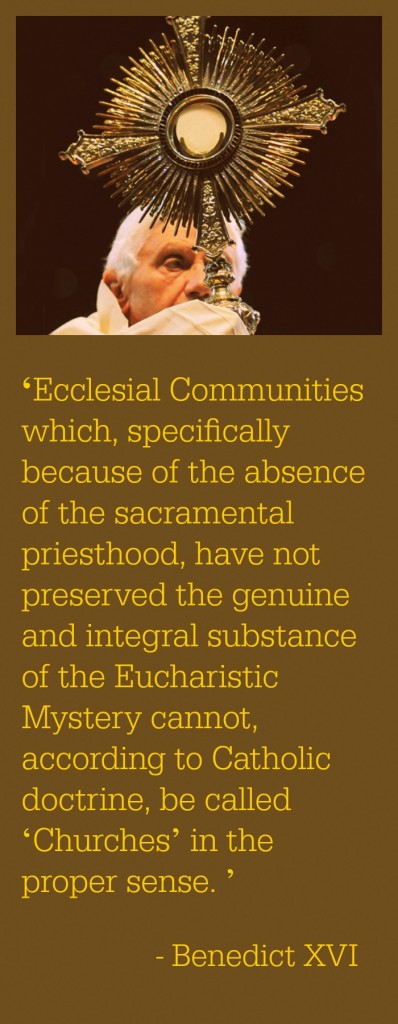
To what extent can one legitimately use the word ‘Church’ for the manifold Protestant communities? This, I confess, I do not know. This may sound scandalous. But I mean no disrespect by my confession of ‘not knowing’.
As a Catholic, I note how recent Vatican documents speak of the Eastern Orthodox Churches as ‘Churches’. But these same documents refers to the Protestant denominations as ‘Ecclesial Communities’, rather than Churches1. In issuing these, I do not think the recent Popes, like Benedict XVI, intended disrespect either.
Such Protestant communities undoubtedly serve humanity profoundly. But is it strictly accurate to call them ‘Churches’? It all depends on one’s definition.
If one defines the Church according to the understanding established for fi$een centuries before the Reformation, one speaks necessarily of an apostolic succession and a hierarchy, oriented to the Seven Sacraments, above all to the Holy Sacrament of the Eucharist.
By such a definition, many a Christian congregation cannot be called ‘Church’, even if, it too, points the way to Christ.
No, I do not think Benedict XVI meant disrespect. He pontificate was plainly filled with burning compassion for humanity.
In that compassion, he tried to orient us towards the original meaning of that so- misunderstood word: Church. He saw how greatly humanity suffers, deprived of this crucial understanding.
This book is also concerned with such suffering. For we survey the tragedy of global materialism. We explore a society famished for meaning and mystery: the New Age movement, psychotherapy, holistic healing and countless other phenomena – all these bear ample testimony to deprivation. Such hunger! Such terrible hunger! Thus, I try to throw open windows to the Mystery at the Heart of the Church. For Our Lord
Jesus Christ is One of us and His Heart is still beating still for us all. One may meet the God-Man through His Church, if one practices Her traditions and receives Her Sacraments. One can meet the Mystery of Divine Humanness and draw strength in this de-humanising world …
On Vatican II
Alas, however, a problem exists here. For the Catholic Church is in danger of losing many of her traditional practices, since the time of the Second Vatican Council (1962-1965).
The Council Fathers, of course, sought to help the Church, not harm Her. However, they tried to open the Church to the world or even accommodate Her to the world – at the expense of tradition.
Thus (to cite a single instance of what I mean) Fr. Karl Rahner campaigned energetically to ensure the Council refused the traditional image of Our Lady, for fear, perhaps, of upsetting both Protestants and modern liberal theologians alike2.
At any rate, after the Council, dramatic changes were undertaken to diminish Catholic distinctiveness – what separated the Church from the world.
Perhaps the most obvious change occurred in the Mass, which had been celebrated exclusively in Latin for centuries. Now, it was replaced by a popularised vernacular version.
But the new Mass was only symptomatic of a wider change whereby a new spirit of acquiescence and accommodation could be observed: the so-called ‘Spirit of Vatican II’. ‘So-called’, I say because much – very much – that was done in the name of the Council was not at all willed by the Council Fathers.
Yet, whatever the true sources of this so-called ‘Spirit of Vatican II’, the Catholic Mystery has been devastated.
The Catholic Sacraments
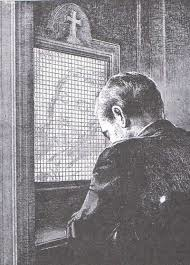
Perhaps this is nowhere more tragically evident than the Sacraments. In the so-called developed world at least, the numbers speak for themselves: Precipitous drops in priestly Ordinations, Baptism, Confirmation, Confession and Mass attendance – everywhere a general weakening of the Catholic Mystery.
In a materialistic world, famished of meaning, is it surprising how many folk have deserted the Church since Vatican II (in many cases for New Age pastures)?
A central idea in this book is this: In the failure to guard sacred tradition, the modernising elements within the Catholic Church have not only failed to meet the true needs of our time – but betrayed them.
The Sacred Heart beating at the centre of the Church has not abandoned Her and never will. But how often that Sacred Heart is obscured!
Many a modern Mass is replete with banal – or even bizarrely inappropriate – liturgy, yet His Sacred Heart remains beating there. It is as though this Heart is wrapped in banks of fog.
Such irreverent celebrations of the Holy Mass are not sufficient to destroy Christ’s presence; they only blind people to it.
The results are as manifold as they are grievous. But perhaps few are as saddening as this: Catholics, even when they continue to practice, are lost. They are no longer really sure of their Faith or why it matters. The Church is torn apart by warfare between liberals and conservatives.
And a house divided against itself cannot stand. Individually and collectively, Catholics are unable to stand effectively, as the once-Christian West falls beneath the double-barrelled assault of Secular Materialism and New Age neo-paganism. And so this book issues a cry – a cry for the Church to surrender the spirit of compromise and accommodation which has both robbed Catholics of their Faith and their capacity to stand erect in a world going under …
Findhorn and Other Things about My Background
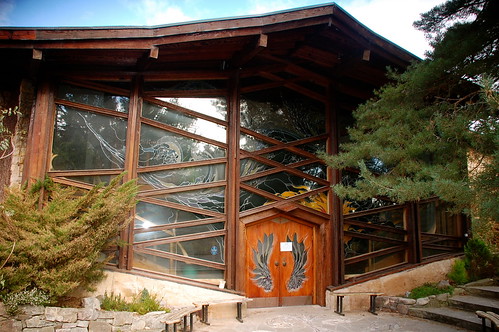
Here is what I see through my windows onto the world. These windows, of course, are framed by my biography. And to orient my book, dear Lector, I would share with you a brief outline of my life. I was born fifty-one years ago of English parents on the West coast of America. I grew up in both Britain and the United States.
One might observe, then, that I am quintessentia!y Anglo-American. I am forever marked by two great Protestant nations of modern times. That marking had an effect: it rendered the Catholic Mystery invisible to me for decades.
Here lies another theme to this book: that peculiarly Anglosphere blackout of the Holy Church. A cultural blanketing exists in the English-speaking world, which frequently buries the Catholic Church so deeply as to make Her not simply invisible, but also incomprehensible – even when or if She is at last discovered.
But let me return to my childhood, which, after my earliest years in California, was mainly spent in a very ‘White Anglo-Saxon Protestant’ part of Oregon.
My upbringing was not especially religious – I was not baptised as a child. Still, my father possessed real faith in God, a gift beyond price to his son. When I was young, he read the Bible. Later, he turned to the Koran – but not before teaching me the Pater Noster.
And so, as a child, I prayed to Our Father nightly – though I saw scarcely anything at all that pointed to Jesus Christ. Yet, all my early years, I believed in God – but a God seen purely as transcendent. I would not know the God Incarnate, the Word made Flesh, until many years later. Nothing in my childhood provided a clue as to the God who became particular and personal. Nothing showed me that since nearly two millennia, God now had a human heart …
Thus, it was the idea of God as transcendent spirit, spirit alone, that I carried into my initial explorations of New Age culture, thirty-five years ago.
For around 1979, age 15, I began reading of the New Age community at Findhorn in the far north of Scotland. The following year, I made my first journey there. Findhorn – much more will be said of it anon. For now, suffice it to say that many regard it as the leading New Age community in the world.
In 1986, I went to live at Findhorn for the best part of three years. I spent long hours in Eastern forms of meditation and studying esoteric Theosophy, that of Alice A. Bailey in particular. In fact, it was the writings of Alice Bailey, which first brought the term ‘New Age’ to popular usage.
And should you wish to look there, Lector, you can find the doctrine (articulated in depth) that traditional Christianity is now being superseded by a dawning Age of Aquarius. Christianity, so it is said, will shortly be replaced by modern forms of spirituality more appropriate for a New Age.
After leaving Findhorn, I aspired to bring this so-called ‘modern spirituality’ to the wider world – which I regarded as free of dogmas, doctrines and sectarian bias. (Whether such is truly the case is a question we must also leave for later on.) I had met a woman at the community and we left together – for the express purpose of bringing spirituality ‘Findhorn style’ to Cambridge, England.
We established, in this ancient seat of learning, an educational charity to promote our ‘modern non- religious spirituality’. Our city-centre premises contained a library of books and a room for meditation. We also hosted lectures and workshops by well-known figures in the New Age movement, including Peter Russell, Rupert Sheldrake, Carolyn Myss and Sir George Trevelyan.
Here in Cambridge, I should also note that I began to study the Anthroposophy of Rudolf Steiner. Steiner had once been a Theosophist and is therefore often confused with the New Age. The truth is somewhat different: Steiner broke from Theosophy, precisely because he rejected the anti-Christian thrust present within it.
This is not to justify his Anthroposophy, which remained severely critical of the Church! However, Anthroposophy remains a very different entity from the New Age movement. Here we only touch on complex matters which also form part of my past, although I do not enter into them much in this book.
No, in the present volume, I am far more concerned with making reparation for my New Age past. For in Cambridge, I worked, hard, to evangelise the spirit of the New Age. I genuinely assumed this spirit was countercultural. In some sense it was. It plainly rejected certain aspects of mainstream materialism.

But it would take me years to see how, in so many ways, my beloved New Age movement was hardly countercultural at all! It jived to the beat of the secular, liberal, capitalist culture. Thus, it could never truly defy that culture (as the Church has done repeatedly and courageously).
All this escaped me at the time. The Nineties went on; with the Cambridge project, weariness set in. I felt loss of life and enthusiasm. Enthusiasm: I knew that word derived from the Greek en theos, but still my lassitude did not trouble me. I never doubted this New Age spirituality was crucial for the world. And so I laboured on.
But in 1997, as this book shall tell, everything changed. In a few short weeks that autumn, I stumbled on the road to Aquarius. I received a blessing from a Catholic priest, discovered Catholic theology and a miracle befell me: Perhaps I even touched the Hem of His Garment.
By now, I was working for my New Age dream with another woman – Kim. Yet by events of formidable Providence, we were soon baptised as Anglicans and married as Christians.
In all this, I was assisted by an unusual Catholic author: Valentin Tomberg, who wrote a masterpiece entitled Meditations on the Tarot. The book contains not a single line about telling fortunes, yet its unusual nature may trouble some folk.
For myself, I know the GRIP of the New Age. Without this book, I do not know if I could have become liberated from it. And I believe the book can liberate others like myself and point the way to Jesus Christ and His Church. Much more, then, will be said about this text and its author in terms of freeing people from New Age bondage.
The ensuing years saw many changes. We left Cambridge for a trail of new cultures, beginning with Germany, Switzerland and Wales. On Easter night 2000, Kim and I were confirmed Catholic. A mysterious, wholly unexpected joy descended that night and, to this day, my Confirmation remains one of the greatest joys of my life.
Despite this startling plenitude, I still remained somewhat aloof from the Church at first. New Age beliefs die hard. My attachment to many secular dogmas was also tenacious indeed. I was a thoroughly liberal Catholic.
Indeed, it seems to me as though I was something like a liberal New Age Protestant – who just happened to have been confirmed in the Church of Rome. I did not engage deeply with the Tradition, at first. It was years before I would pray the Rosary. Sometimes I missed Mass, ignoring the Sunday obligation.
But the Sanctifying Grace of my Confirmation continued to work in the depths of my soul. Slowly, I entered more fully into the Mystery of the Church.
Foreword for Monarchy by Roger Buck
Into Catholic Ireland – and Catholic France

My entry into the Catholic Mystery was facilitated as our semi- nomadic life continued and we left Protestant countries behind to inhabit a series of Catholic cultures: Spain, France – but first of all Ireland.
It was in the west of Ireland that I first really encountered a culture, which had been utterly steeped in Catholicism. Here I discovered very different attitudes from the liberal and secular certainties, which characterised my own Protestant Anglosphere.
For, in Ireland, I experienced the afterglow, at least, of an integrally Catholic culture. This is to say, a culture where the Faith had formed, until very recently, a sine qua non – i.e. it was integral.
The Irish society I encountered in 2004 had known, within living memory, an immersion in prayers, Sacraments and traditions, inconceivable in America and England.
Ireland – how different you were to anything I knew in my youth! For the Catholic Mystery was not well-nigh invisible on your blessed island! And your people possessed a spirit of piety, warmth and community – unlike anything I had witnessed anywhere before.
Ireland, this book is dedicated to your Christian soul, because your profoundly Catholic culture guided me to what lies at the heart of this volume.
Not only did you lead me deeply into the Mystery of the Church, you also showed me the only hope I have for Western civilisation.
Yet this book is also dedicated to France, where my soul has been transformed, particularly in a little town called Paray-le-Monial. In Paray in 1673, the Master of Love revealed His Sacred Heart to humanity.
And from Paray, the Cult of the Sacred Heart was born, whence it spread rapidly, across France, Poland, Spain, Latin America – indeed the entire Catholic world of that time. This, of course, is the world which remained Catholic after the Reformation divided Christendom – leaving northern Europe and her colonies firmly Protestant.
Here we evoke a distinction, then, between societies whose religious development was never interrupted by the Reformation – and those that were. For English and other northern European cultures did not participate in Catholic tradition as she continued to evolve after the Sixteenth Century.
Thus, when devotion to his Sacred Heart spread across the Catholic world, it did not reach England and her colonies. Or at very least, this devotion did not reach her easily. It was outright repressed at first, along with Catholicism itself.
Later on, when Catholicism was legally permitted, other ways were found to marginalise or suppress devotion to His Sacred Heart. For example, it was ridiculed as nothing more than mere sentimentalism or Jesuit fanaticism.
The truth is very different. The Sacred Heart had appeared as a burning furnace of charity for a great purpose. Tridentine Catholicism – the era following the Council of Trent (1549-1563) until Vatican II – would soon be thoroughly permeated and transformed by the wildfire development of the Sacred Heart devotion.

And in this book we suggest that Tridentine Catholic culture was thereby warmed by this furnace of His Love. It was protected by it. By contrast, we argue that the countries deprived of this devotion were more prone to the icy rationalism which has led to present-day Secular Materialism.
And yet was not France a leading force amongst the nations that pioneered modern secular culture? Is not France – in many people’s minds, at least – that great revolutionary nation which threw off its Catholic ‘shackles’ to become the country of ‘superb’ rationalism, urbane sophistication and secularism it is today? At first blush, France would certainly appear little different to the Protestant nations in terms of secularisation.
At first blush, we repeat. For the truth is different – because before it was destroyed by aggressive de-Christianisation, there was once another
France, a France that struggled to remain faithful in the face of religious persecution. Like Ireland, Nineteenth Century France had also been home to an astonishing, vital, integral Catholic culture.
Yet, as we shall see, French Catholicism was repeatedly attacked for over a century by revolutionary forces which worked ruthlessly and systematically: to destroy the monasteries, to expel religious from French soil, to close Catholic schools, to forcibly appropriate the property of the Church – not to mention a thousand other means more subtle and insidious.
Yes France was once very different to the Anglo-American sphere. Countries like England and America did not need to brutally repress opposition to secularism – because opposition to secularism hardly existed in those countries!

By contrast, France was once home to a far- reaching culture of Catholic Counter-Revolution, which resisted secularisation to the teeth! We explore this Counter-Revolution later in this book.
Let it suffice, for now, that Protestant countries generally secularised far more rapidly and easily than those traditional Catholic societies, warmed and animated by the Heart of the Church. Instead, an alternative world-vision to Secular Materialism once powerfully manifested itself in Catholic cultures – in sharp contrast to Anglo-American culture.
Perhaps few things bear witness to this Catholic contrast than a national flag, once seriously proposed in such countries. Catholic France, Catholic Ireland – both were countries for whom His Sacred Heart has been particularly important.
And it is a well-known fact that, for decades, vast numbers of Catholic French sought to place His Sacred Heart upon the middle band of the French tricolour: Blue, White and Red.
It is much less known that at the birth of the Irish Free State in 1922, there was the same call to place His Sacred Heart upon the Irish tricolour: Green, White and Orange. Such notions may sound bizarre indeed to British and Americans. One cannot easily imagine similar initiatives on the Union Jack or the Stars and Stripes!
On Christendom
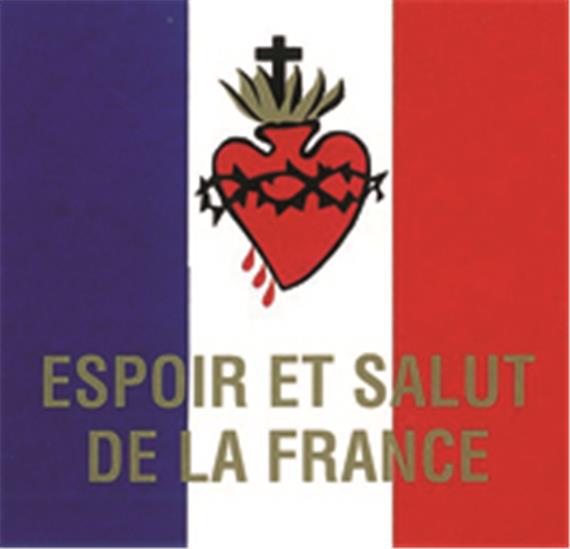
By invoking such potentially startling images, I hope to illumine the very different cultural attitudes Catholic countries possessed, even relatively recently, compared to Protestant ones. Clearly, the image of the Sacred Heart on the flag reveals a rejection of secularism. It points to a yearning to see the nation devoted to Christian values rather than materialistic ones. This is to say, the yearning for Christendom renewed …
Is this book then a call to Christendom renewed? Yes – however you will not find any grandiose political project outlined in these pages. Nor will you see, I hope, a simplistic nostalgia for an impossible return to the past.
What you will find is my conviction that Secular Materialism is killing us – body and soul -and that Catholics have a duty to resist this. They have a duty to work towards a civilisation animated by Christ and His Church.
Such a civilisation will inevitably look different to that envisaged by the Counter-Revolutionaries of yesteryear. However, I lovingly evoke the memory of those original Counter-Revolutionaries. I am personally indebted to these people – they forged the Catholic Ireland and Catholic France which opened my eyes and transformed my soul.
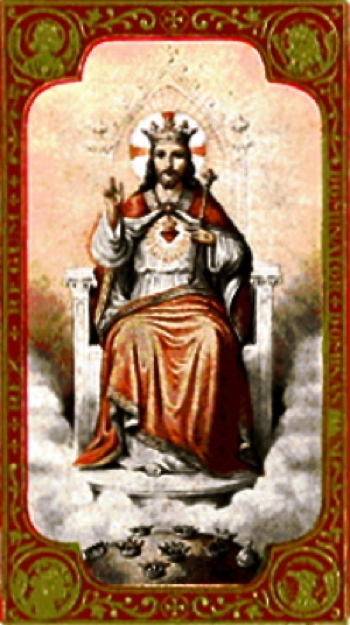
Likewise, I am indebted to another set of people – today’s Catholic traditionalists who also lovingly remember these cultures. These are the people concerned that the post-conciliar Church sacrificed far too much of its tradition. Generally speaking, they are usually identified by their love for the old Latin Mass. The truth is more complex. For these Catholics also believe the post-conciliar church has accommodating secularism and, like the Counter-Revolutionaries of old, remember Christendom …
In this regard, it is striking that Catholic traditionalism has emerged from one country above all – France. It is also notable the French have a name for these Catholic traditionalists – integriste, which has no exact equivalent in common, ordinary English.
Now, one sometimes finds the word rendered ‘integralist’ in scholarly English texts. Still, by and large, English speakers do not readily recognise the words integralist and integralism. The reason why is instructive. It is because the Anglosphere (Ireland excepted) never possessed integral Catholic cultures – with integristes who resisted secularism.
What is an integriste? An integriste (or integralist) is someone who seeks to maintain Catholicism as an integral part of culture. He looks to the world of the Catholic past, where the Catholic Mystery was not well-nigh invisible – as it has become today.
He looks to a world where the bells of the Angelus summoned people to prayer morning, noon and night. He looks to a world where his children might have had a thousand cultural reminders of the Catholic Mystery – instead of a thousand cultural reinforcements of secular ideology and consumer excess.
This is to say, he mourns the fact that where his children might once have seen the Cross trumpeting the Central Mystery of the world, they now see a pair of golden arches trumpeting hamburgers …
In short, he looks to Christendom rather than Secular Materialism.
Integriste – in France, the word is usually used pejoratively: as though these integristes were simply backwards fundamentalists, who do not believe in progress or freedom.
But is it true progress and true freedom to give children a purely materialistic education? Is it true progress and freedom to render the Catholic religion buried and invisible? Is it true progress and freedom to eradicate Catholic imagery (e.g. crucifixes) from the public square – whilst global corporations impose a million other images upon us, which, moreover, are expressly designed to manipulate the human psyche? Is not such advertising far more aggressively invasive than the peals of church bells?
Yet how these integristes are mocked for not keeping in step with the ‘spirit of the times’. Or should that be lockstep – which is to say: forced to march in time? For in this book, we shall suggest a soulless crushing conformism characterises our brave new global world, created in large measure by the new global corporations …
End of book extract. The themes here, however, are explored throughout this website in hundreds of posts as well as the videos featured on them. Those who are interested in looking further may consult the various labels at this site.
Here are some of the more important ones related to the above: Sacred Heart, Catholic Traditionalism, Catholic Ireland, Catholic France, New Age, Findhorn, Liturgy and Sacraments
Foreword for Monarchy by Roger Buck

Buying Books at Amazon Through These Links Gives Us a Commission. This Supports Our Apostolate. Thank You if You Can Help Us Like This!
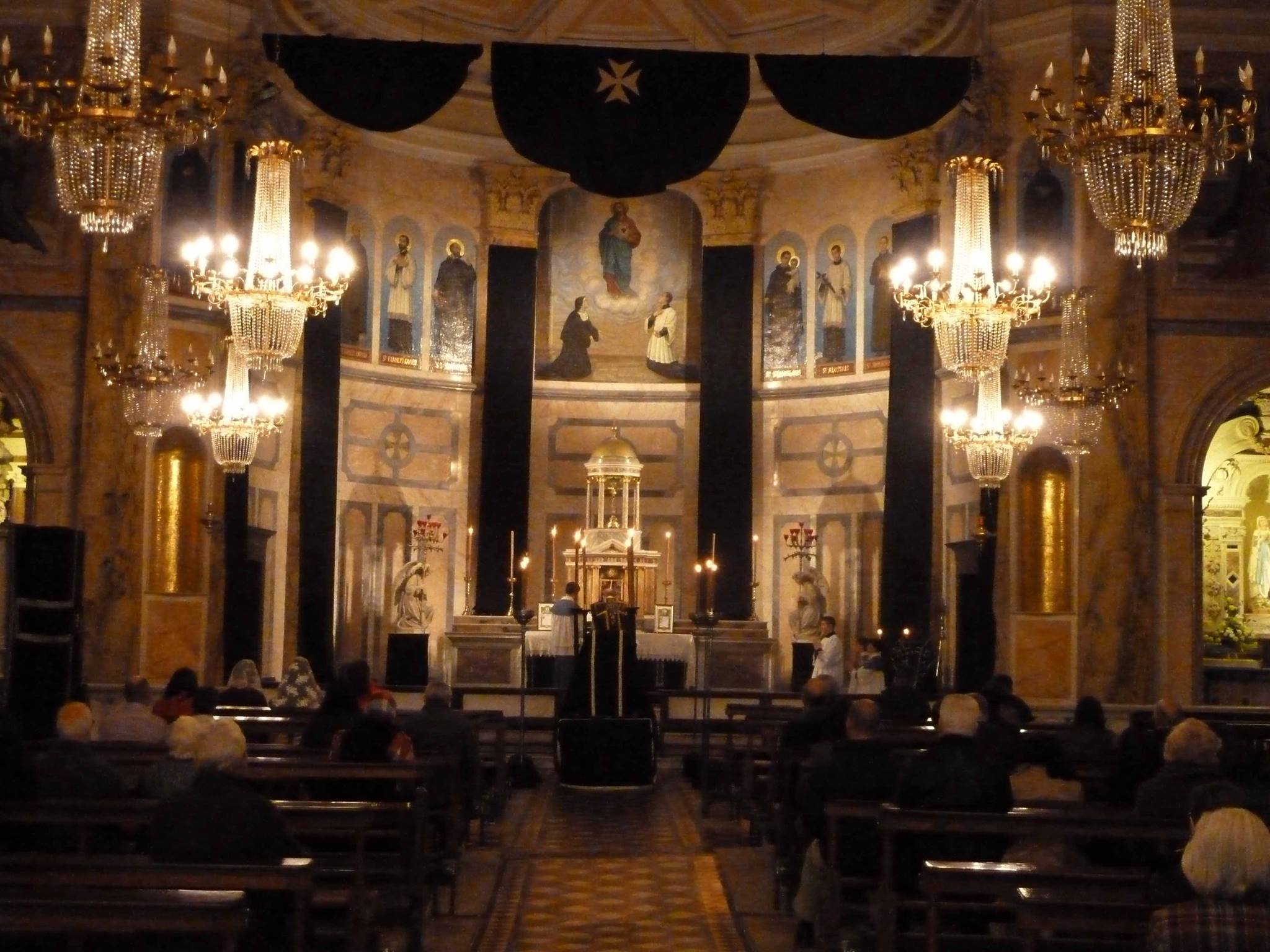
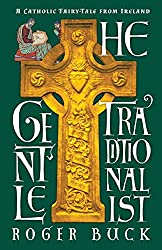
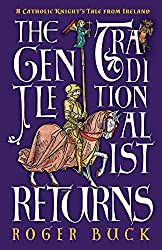

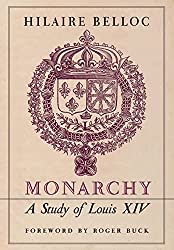
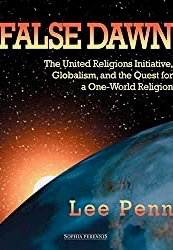

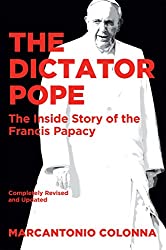
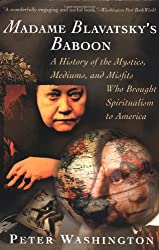
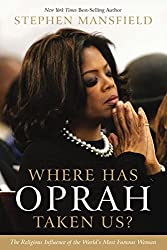
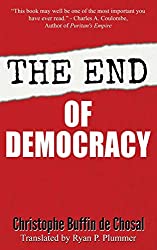
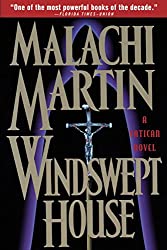
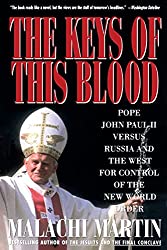


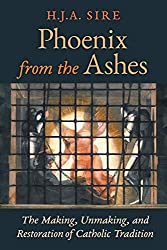



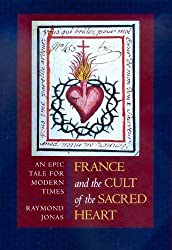
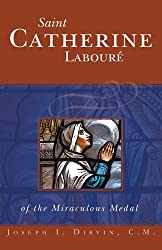
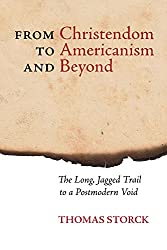
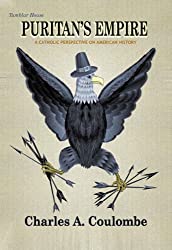
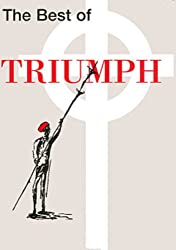

Comments
comments are currently closed
5 responses to “On the Sacred Heart, the Crisis of Catholic Tradition and the New Age Movement”
[…] Cor Jesu Sacratissimum HomeDedicationAbout UsKim's WeblogRoger's WeblogWebburstsReviewsArticles « Cor Jesu Sacratissimum – Extract from the Opening Chapter […]
[…] As I have endeavoured to explain here, the Pope remains with the understanding of this word that prevailed for 1,500 years before the Reformation. […]
[…] thought my book Cor Jesu Sacratissimum was basically finished long […]
[…] there is a much, much longer piece at this website (here) which tries to answer those unanswerable questions. Any reader who really wants to know is […]
[…] (But here is not the place for words, though I say a few more about this here.) […]